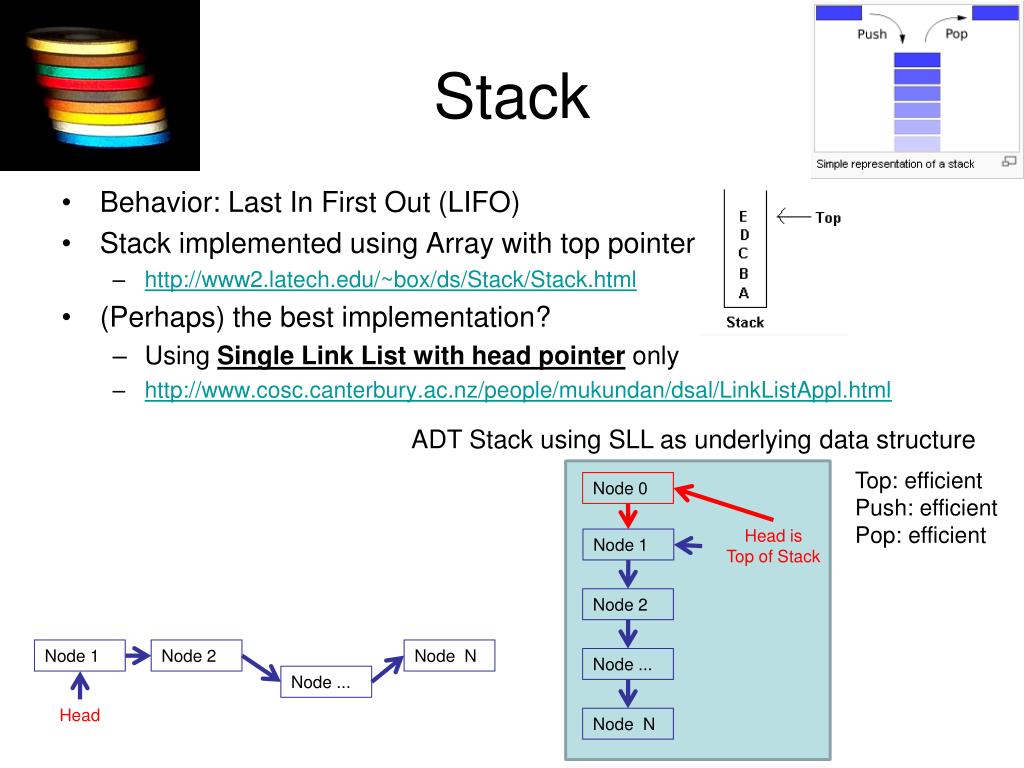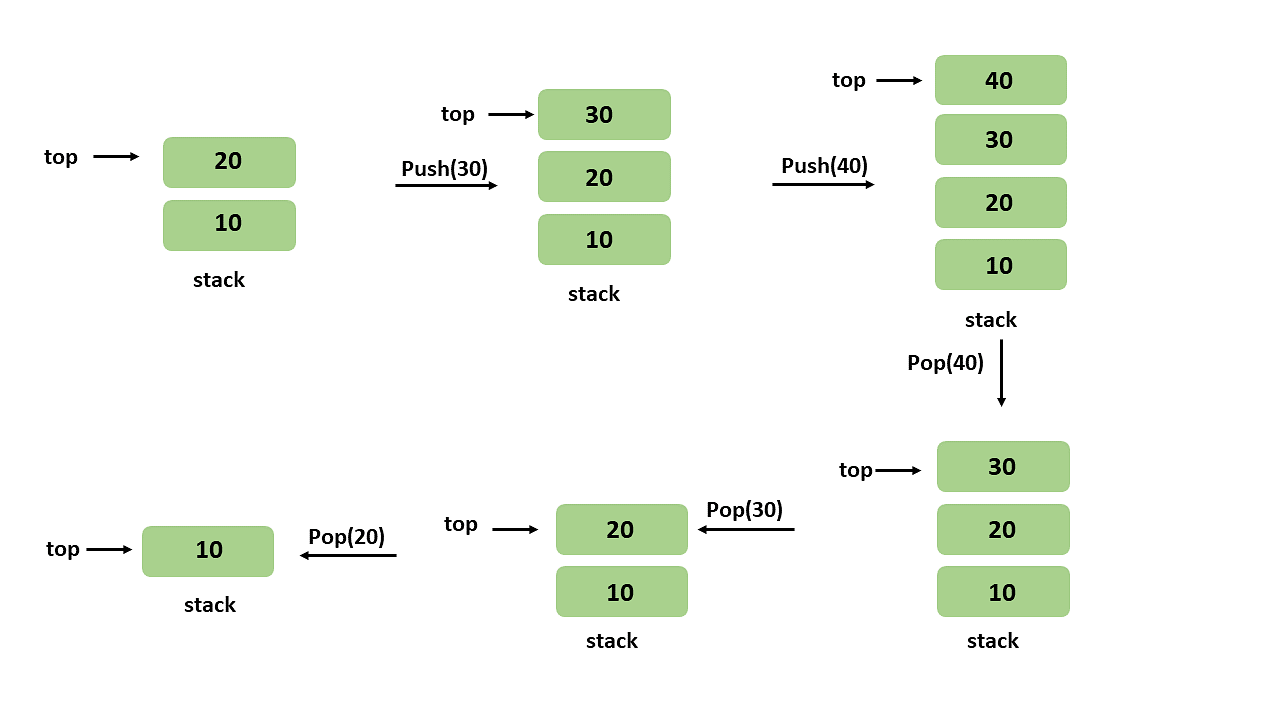
The processes that are ready to execute and the requests of CPU resources wait in a queue and the request is served on a first come first serve basis.

Implementing Stack Functionalities Using a Linked List Peek – it will show the element on the top of the stack (without removing it).If we try to perform a pop operation on an empty stack, then it is said to be a stack underflow condition. Elements are always removed from the top of the stack. Pop – it specifies removing an element from the stack.If we try to insert an element when the stack is full, then it is said to be a stack overflow condition. Push – it specifies adding an element to the stack.Here we will define three operations on a stack:

Since it allows insertion and deletion from only one end and the element to be inserted last will be the element to be deleted first, it is called the 'Last in First Out' data structure (LIFO). If we want to remove an element from the stack, we can only remove the top element from the stack. New elements are added at the top of the stack. What Is a Stack?Ī stack is a linear data structure which allows the adding and removing of elements in a particular order.
#DIFFERENCE BETWEEN ARRAY LINKED LIST STACK AND QUEUE CODE#
Implementing queue functionalities using linked lists.īefore proceeding further, I would recommend downloading the source code from GitHub.Implementing stack functionalities using linked lists.Please visit my earlier article on linked list implementation in C# to get a basic understanding of linked lists. We will discuss various I/O operations on these data structures and their implementation using another data structure, i.e., linked lists. The constructor sets both the front and back to null pointers, signifying an empty queue.In this article, we will be discussing two data structures – Stack and Queue. Pointers to nodes at the front and back of the queue are stored. The above code declares a template queue class in C++ based upon a doubly linked list of nodes. Array-Based Implementation template class Stack


 0 kommentar(er)
0 kommentar(er)
